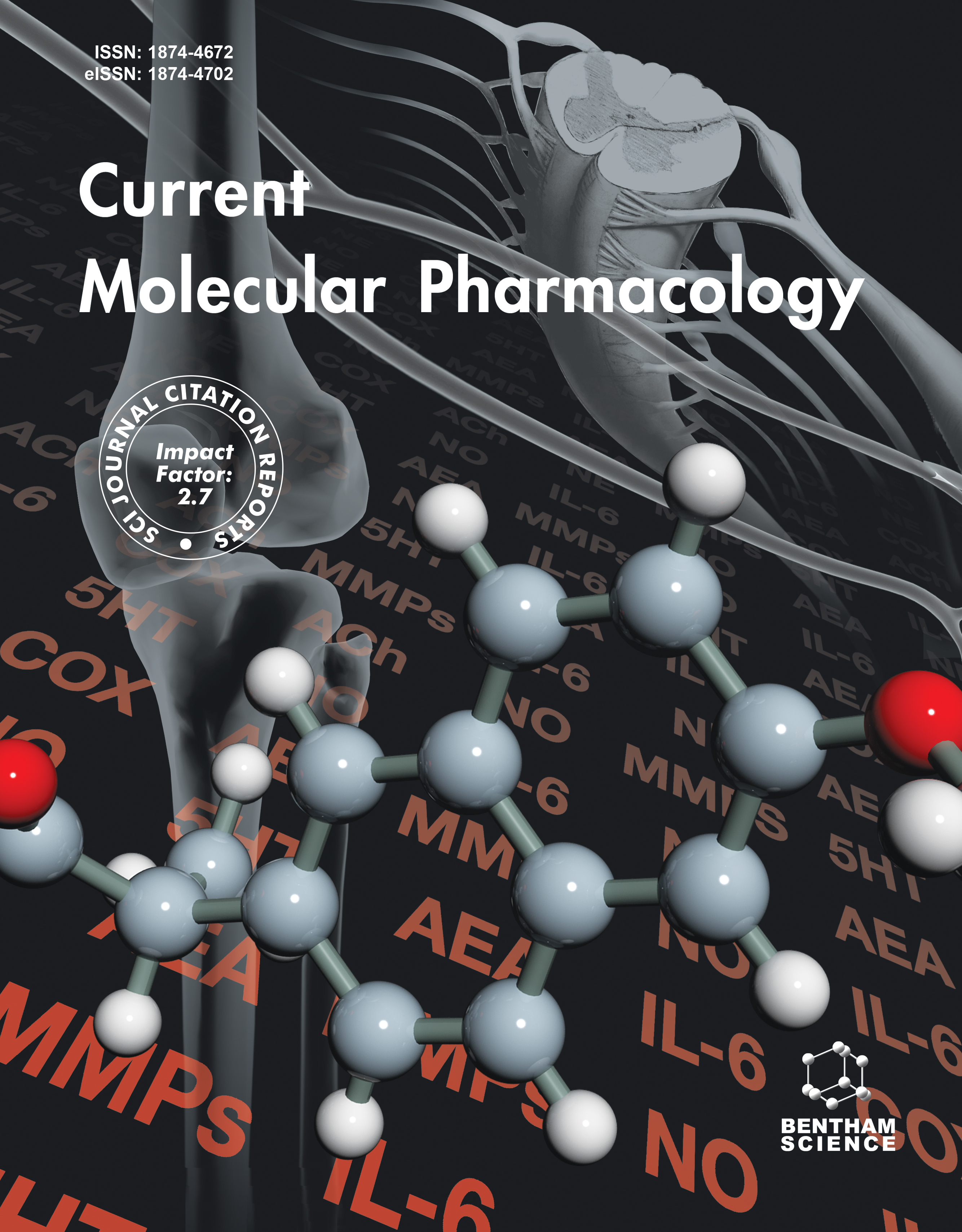-
oa An Essential Role of c-Fos in Notch1-mediated Promotion of Proliferation of KSHV-Infected SH-SY5Y Cells
- Source: Current Molecular Pharmacology, Volume 17, Issue 1, Jan 2024, e18761429264583
-
- 15 Jun 2023
- 26 Sep 2023
- 01 Jan 2024
Abstract
This study aimed to investigate the influence of Notch1 on c-Fos and the effect of c-Fos on the proliferation of Kaposi's sarcoma-associated herpesvirus (KSHV)-infected neuronal cells.
Real-time PCR and western blotting were used to determine c-Fos expression levels in KSHV-infected (SK-RG) and uninfected SH-SY5Y cells. C-Fos levels were measured again in SK-RG cells with or without Notch1 knockdown. Next, we measured c-Fos and p-c-Fos concentrations after treatment with the Notch1 γ-secretase inhibitor LY-411575 and the Notch1 activator Jagged-1. MTT and Ki-67 staining were used to evaluate the proliferation ability of cells after c-Fos levels downregulation. CyclinD1, CDK6, and CDK4 expression levels and cell cycle were analyzed by western blotting and flow cytometry, respectively. After the c-Fos intervention, the KSHV copy number and gene expression of RTA, LANA and K8.1 were analyzed by real-time TaqMan PCR.
C-Fos was up-regulated in KSHV-infected SK-RG cells. However, the siRNA-mediated knockdown of Notch1 resulted in a significant decrease in the levels of c-Fos and p-c-Fos (P <0.01, P <0.001). Additionally, a decrease in Cyclin D1, CDK6, and CDK4 was also detected. The Notch1 inhibitor LY-411575 showed the potential to down-regulate the levels of c-Fos and p-c-Fos, which was consistent with Notch1 knockdown group (P <0.01), whereas the expression and phosphorylation of c-Fos were remarkably up-regulated by treatment of Notch1 activator Jagged-1 (P <0.05). In addition, our data obtained by MTT and Ki-67 staining revealed that the c-Fos down-regulation led to a significant reduction in cell viability and proliferation of the SK-RG cells (P <0.001). Moreover, FACS analysis showed that the cell cycle was arrested in the G0/G1 stage, and the expressions of Cyclin D1, CDK6, and CDK4 were down-regulated in the c-Fos-knockdown SK-RG cells (P <0.05). Reduction in total KSHV copy number and expressions of viral genes (RTA, LANA and K8.1) were also detected in c-Fos down-regulated SK-RG cells (P <0.05).
Our findings strongly indicate that c-Fos plays a crucial role in the promotion of cell proliferation through Notch1 signaling in KSHV-infected cells. Furthermore, our results suggest that the inhibition of expression of key viral pathogenic proteins is likely involved in this process.


